Cover
Solid Modelling
and CAD Systems
ISBN 9780857292582
Preface
Acknowledgments
Contents
1 Case Studies
1.1…Linear Extrusion Piece
1.1.1 Modelling Method
1.1.1.1 Step 1: The Basic Shape
1.1.1.2 Step 2: The Circular Extrusions
1.1.1.3 Step 3: Complex Pockets on Top Surface
1.1.1.4 Step 4: Small Extrusion on Underside
1.1.1.5 Step 5: Slots on Bottom Face
1.1.1.6 Step 6: Front Cutout
1.1.1.7 Step 7: Fixation Holes
1.1.1.8 Step 8: Longitudinal Hole
1.1.1.9 Step 9: H-shaped Cutout
1.1.2 Questions
1.1.2.1 Why Not Make Just a Half Piece and Reflect It?
1.1.2.2 What Shape Is the Base Shape?
1.1.2.3 How to Create Blended Shapes
1.1.2.4 How Do You Choose Limits for an Extrusion?
1.1.2.5 How and Where Do You Make It?
1.2…Rotational Piece
1.2.1 Modelling Method
1.2.1.1 Step 1: The Basic Shape
1.2.1.2 Step 2: Adding a Chamfer
1.2.1.3 Step 3: Adding the Hole Perpendicular to the Rotation Axis
1.2.1.4 Step 4: Adding a Hole Pattern
1.2.1.5 Step 5: Adding the Keyway
1.2.2 Questions
1.2.2.1 Why Use a Chamfer, Why Not Incorporate the Angle in the Basic Extrusion Shape?
1.2.2.2 Why Is There No ‘‘Make Keyway’’ Operation in a CAD System?
1.2.2.3 How Do You Decide the Angle of the Keyway Round the Axis?
1.3…Hollowed Lofted Part
1.3.1 Modelling Method
1.3.1.1 Step 1: Creating the Sections
1.3.1.2 Step 2: Creating the Loft Between the Sections
1.3.1.3 Step 3: Creating the Thickened Part
1.3.1.4 Step 4: Blending the Thickened Part
1.3.1.5 Step 5: Hollowing the Object
1.3.1.6 Step 6: Extruding the Flange
1.3.1.7 Step 7: Creating the Hole Pattern
1.3.1.8 Step 8: Piercing the Flange
1.3.2 Questions
1.3.2.1 What Happens If the Start Point and/or Section Directions Do Not Match?
1.3.2.2 What Happens If the Sections Have Different Topology?
1.3.2.3 Why Can’t the CAD System Judge If the Lofting Result Is Correct or Not?
1.4…Creating Assemblies
1.4.1 Creating the Parts
1.4.2 Creating the Assembly Structure
1.4.3 Constraining the Elements
1.4.4 Questions
1.4.4.1 Can You Assemble Parts Which Physically Do Not Fit?
1.4.4.2 Do the Constraints Imposed Correspond to the Assembly Constraints of the Real Objects?
1.4.4.3 Why Did You Design the Housing and Covers Separately?
1.4.4.4 Why Was the Gear Pair Created as Two Separate Objects?
1.4.4.5 What About Tolerances?
1.5…Determining a Modelling Sequence
1.6…Design Exercises
1.6.1 A Bracket
1.6.2 A Flange
1.6.3 A Car
1.7…CAD System Structure
1.7.1 Geometric Kernels
1.7.2 The CAD User Interface
1.7.3 Graphics
1.7.4 Applications
1.7.5 Discfiles and Databases
1.7.6 Standalone Systems and Multi-User Work
1.7.6.1 Concurrent Engineering
1.7.6.2 Multi-User Systems
1.8…The Modelling Environment
1.9…Chapter Summary
1.10…User Exercises
1.10.1 The MBB Gehäuse Rohteil
1.10.2 The ANC-101 Object
1.10.3 Linear Extrusion Part Using Symmetry
References
2 How Objects Are Modelled
2.1…History
2.2…3D Wireframe Modelling
2.3…Drafting Systems
2.4…Surface Modelling
2.5…Solid Modelling
2.6…Constructive Solid Geometry
2.7…Boundary Representation
2.7.1 Finding Entities from Each Other
2.7.2 Finding Sets of Connected Entities
2.7.3 Euler Operators
2.7.3.1 Spanning Sets and Decompositions
2.7.4 Stepwise Algorithms
2.7.4.1 Linear Extrusion
2.7.4.2 Splitting an Object
2.7.4.3 Etcetera
2.7.5 Complex Utilities
2.7.5.1 Copying
2.7.5.2 Deleting
2.7.5.3 Transforming
2.7.5.4 Dualling
2.8…Complex Geometry and Integration
2.9…The Cylinder Test
2.10…Assemblies
2.11…Chapter Summary
2.12…Representation Exercises
2.12.1 CSG Decompositions
2.12.1.1 The Cylinder Test
References
3 2D Shape Definition
3.1…BUILD’s 2.5D
3.2…Two Dimensional Elements
3.2.1 Lines, Curves, Dimensions and Constraints
3.2.2 Grids and Rulers
3.3…Shapes and Shape Modifications
3.3.1 Corner Round-Off
3.3.2 Corner Shaving (2D Chamfer)
3.3.3 Polygons
3.3.4 Ellipses, Parabolae and Other Geometry
3.3.5 Patterns
3.4…Constraint Systems
3.5…Constraint Solving
3.6…Tolerance Analysis
3.7…From 2D to Solid
3.8…Inscribing on Faces
3.9…Chapter Summary
3.10…2D Exercises
3.10.1 Constraint Identification
3.10.2 Shape Decomposition
3.10.3 Over-Constraint Analysis
3.10.4 Dimension Games
References
4 Operations and Functionality
4.1…Boolean Operations
4.1.1 Parameters
4.1.2 Potential Errors
4.1.3 The Boolean Algorithm
4.1.4 Special Cases
4.1.5 Sectioning
4.1.6 Experiments to Try
4.1.6.1 One Body Contained in the Other
4.1.6.2 One Body Separate from the Other
4.1.6.3 Two Bodies Touching Along a Face Set
4.1.6.4 Two Bodies Touching Along an Edge
4.1.6.5 Two Bodies Touching at a Vertex
4.2…Extrusion Operations
4.2.1 Parameters
4.2.2 Potential Errors
4.2.3 The Simple Linear Extrusion Algorithm
4.2.4 Compound Linear Extrusion
4.2.5 Incremental Extrusion Limits
4.2.6 The Simple Circular Extrusion Algorithm
4.2.7 Extruding Along a Curve
4.2.8 Extruding Along a Path
4.2.9 Possible Variants
4.2.10 Experiments to Try
4.2.10.1 Touching Objects
4.2.10.2 Missing Objects
4.2.10.3 Experiments with Limits
4.2.10.4 Multiple Components
4.2.10.5 Apex-to-Apex Triangles
4.2.10.6 Vertices on Axes for Circular Extrusion
4.2.10.7 Along-Path Extrusion
4.2.10.8 Along Curve Extrusion
4.2.10.9 Sweeping an Open Figure
4.3…Reflect or Symmetry
4.3.1 Parameters
4.3.2 Potential Errors
4.3.3 Reflection Algorithm
4.3.4 Creating the Transformation Matrix
4.3.5 Copying and Transforming the Object
4.3.6 Joining the Objects
4.3.7 Sub-Operation Symmetry
4.3.8 Experiments
4.3.8.1 Reflection in a Curved Face
4.3.8.2 Reflection Creating a Cavity
4.3.8.3 Reflection Creating Disjointed Objects
4.3.8.4 Reflection with Limited Sub-Objects
4.4…Giving a Face a New Surface (SETSURF)
4.4.1 Parameters
4.4.2 Potential Errors
4.4.3 SETSURF Method
4.4.4 Experiments
4.4.4.1 Disappearing Topology
4.4.4.2 Inserting a Doubly Intersected Surface
4.4.4.3 Inserting a Triply Intersected Surface
4.4.4.4 Inserting a Non-Covering Surface
4.5…Tweaking
4.5.1 Parameters
4.5.2 Potential Errors
4.5.3 Tweaking Method
4.5.4 Experiments
4.5.4.1 Tweaking a Face
4.5.4.2 Tweaking a Face Too Far
4.5.4.3 Tweaking a Curved Face
4.5.4.4 Tweaking a Face with Internal Loops
4.5.4.5 Tweaking an Edge
4.6…Adding a Draft Angle
4.6.1 Parameters
4.6.2 Potential Errors
4.6.3 Drafting Method
4.6.4 Choice of Parameters
4.6.5 Drafting Using Warping
4.6.6 Adding Draft Angles and Mould-Making
4.6.7 Experiments
4.6.7.1 Drafting with Volume Calculation
4.6.7.2 Drafting with Blends
4.6.7.3 Drafting with Undercut
4.6.7.4 Draft Undercutting Again
4.7…Chamfering
4.7.1 Parameters
4.7.2 Potential Errors
4.7.3 Chamfer Algorithm
4.7.4 Chamfered Edges at a Common Vertex
4.7.5 Chamfering Non-Manifold Edges
4.7.6 Experiments
4.7.6.1 Simple Check
4.7.6.2 Meeting Chamfers
4.7.6.3 Thin Part Cutting
4.8…Blending
4.8.1 Parameters
4.8.2 Potential Errors
4.8.3 Blending Algorithm
4.8.4 Blending Edges at a Common Vertex
4.8.5 Blending Non-Manifold Edges
4.8.6 Experiments
4.8.6.1 Meeting Blends Experiment
4.8.6.2 Complex Geometry Experiment
4.9…Shelling an Object
4.9.1 Parameters
4.9.2 Potential Errors
4.9.3 The Shelling Algorithm
4.9.3.1 Offset Geometry
4.9.3.2 Checking for Collisions
4.9.4 Deleting Faces
4.9.5 Designing the Interior
4.9.6 Experiments
4.9.6.1 Offsetting with Collisions
4.9.6.2 Offsetting Objects with Cavities
4.9.6.3 Difficult Geometry
4.9.6.4 Deleting Faces with Hole-Loops
4.10…Unfolding Objects
4.10.1 Parameters
4.10.2 Potential Errors
4.10.3 The Unfolding Algorithm
4.10.4 Experiments
4.10.4.1 L-Shaped Objects
4.10.4.2 Objects with Pockets and Through Holes
4.11…Giving Sheet Objects Thickness
4.11.1 Parameters
4.11.2 Potential Errors
4.11.3 The Shell-Thickening Algorithm
4.11.3.1 Handling Multi-Link Non-Manifold Edges
4.11.3.2 Sharp Edge Slicing
4.11.3.3 Offsetting the Geometry
4.11.3.4 Collision Checking and Finishing
4.11.4 Experiments
4.11.4.1 Branching Sheet Objects
4.11.4.2 Colliding Object Parts
4.12…Filling Closed Shell Objects
4.12.1 Parameters
4.12.2 Potential Errors
4.12.3 The Filling Algorithm
4.12.4 Experiments
4.13…Giving Wire Objects Thickness
4.13.1 Parameters
4.13.2 Potential Errors
4.13.3 The Wire-Conversion Algorithm
4.13.4 Experiments
4.14…Lofting
4.14.1 Parameters
4.14.2 Potential Errors
4.14.3 The Lofting Algorithm
4.14.3.1 The Topological Framework
4.14.3.2 Section Matching
4.14.4 Other Comments
4.14.5 Experiments
4.14.5.1 Experiment with Sections
4.14.5.2 Shape Changing
4.14.5.3 Proportion Changing
4.15…Patterns
4.15.1 Parameters
4.15.2 Potential Errors
4.15.3 Patterning Algorithm
4.15.4 Experiments
4.15.4.1 Disappearing Holes
4.16…Weird Operations
4.16.1 Rebating Edges
4.16.2 Bending Objects
4.16.3 Creating Simple Celtic Patterns
4.16.4 Sculpting
4.17…Creating New Operations
4.18…Chapter Summary
4.19…Operation Exercises
4.19.1 Exercise 1: Sweeping
4.19.2 Exercise 2: Complexity Testing
References
5 Geometry
5.1…Tolerances
5.2…Positions, Vectors and Transformations
5.2.1 Positions and Vectors
5.2.2 Transformations
5.2.2.1 Transformation Combinations
5.2.2.2 Transformation Blacklist
5.2.2.3 Transformation Exercises
5.2.2.4 Transformation 1
5.2.2.5 Transformation 2
5.2.2.6 Transformation 3
5.2.2.7 Transformation 4
5.3…Analytic and Numerical (Free-Form) Geometry
5.4…Geometry and Modelling
5.5…Working with Curves
5.5.1 Bézier Curves
5.5.2 B-Spline Curves
5.5.3 Rational Curve Forms
5.5.4 NURBS Curves
5.5.5 Multi-Piece and Closed Curves
5.5.6 Nasty Curves
5.5.7 Raising the Degree of a Bézier Curve
5.5.8 Subdividing Bézier Curves
5.5.9 Interpolation
5.5.10 Curve Experiments
5.5.10.1 Interpolating a Circle
5.5.10.2 Make a Self-Intersecting Curve
5.5.10.3 Make Another Self-Intersecting Curve
5.5.10.4 Continuity Experiment
5.6…Working with Surfaces
5.6.1 Bézier Surfaces
5.6.2 Creating Surfaces by Extrusion
5.6.3 Lofting
5.6.4 N-Sided Patches
5.6.5 Filling Areas
5.6.6 Surfaces on Curve Frameworks
5.6.7 Surfaces and Topology
5.6.8 Reverse Engineering
5.6.9 Surface Experiments
5.6.9.1 Lofting Experiment
5.6.9.2 Surface Interpolation Experiment I
5.6.9.3 Surface Interpolation Experiment II
5.7…Surface Analysis
5.7.1 Surface Analysis Experiments
5.7.1.1 Cylindrical Surface Experiment
5.7.1.2 Wavy surface experiment
5.7.1.3 Doubly Curved Surface Experiment
5.7.1.4 Discontinuity Analysis
5.8…Integration of Geometry
5.8.1 Standalone Geometry
5.8.2 Adding Surfaces to a Solid
5.8.3 Object Smoothing
5.8.4 Rounding Example
5.9…Some Formulae
5.9.1 Tangent
5.9.2 Curvature
5.9.3 Surface Normal
5.9.4 Principal Curvatures
5.10…Chapter Summary
5.11…Geometry Exercises
5.11.1 Interpolation Exercise
5.11.2 Unequal Surface Transformation
5.11.3 Linear Exercises
5.11.4 Using a Solid to Guide Geometry
5.11.5 Creating a Solid Guided by a Solid
5.11.6 A Silly Parametric Aeroplane
References
6 Non-Manifold Models
6.1…Datastructure Needs
6.2…Wireframe Models
6.2.1 Wireframe Datastructure
6.2.2 Impossible Wireframes
6.2.3 Wireframes and Modelling
6.2.4 Wireframe Experiments
6.2.4.1 Creating Pipework
6.3…Sheet Models
6.3.1 Extruding Wireframe Models
6.3.2 Joining Sheet Objects
6.3.3 Volume Models to Sheet Models
6.3.4 Sheet Model Experiments
6.3.4.1 Extruding Wires
6.3.4.2 Extruding Branching Wires
6.3.4.3 Joining Three or More Sheet Objects
6.3.4.4 Joining Sheet Models Without Matching Edges
6.4…Partial Models
6.5…Non-Manifold Volume Models
6.5.1 Datastructure Improvements
6.5.2 Non-Manifold Volume Applications
6.5.3 Volumetric Experiments
6.5.3.1 Touching Edges by Extrusion
6.5.3.2 Touching Vertices by Extrusion
6.5.3.3 Extruding Touching Shapes
6.5.3.4 Touching Faces
6.5.3.5 Chamfering to Create Touching Elements
6.6…Chapter Summary
6.7…Non-Manifold Exercises
6.7.1 Idealisation Matching
6.7.2 Building the Excavator
References
7 The CAD Interface and Graphical Output
7.1…Graphics Transformations
7.2…Displaying Objects
7.2.1 Approximating Objects
7.2.2 Wireframe Drawing
7.2.3 Silhouette Lines
7.2.4 Shaded Images
7.2.5 Exact Hidden-Line Images
7.2.6 Patterned Objects
7.2.7 3D ‘Tricks’
7.3…Engineering Drawings
7.3.1 Model-Derived Drawings
7.3.2 Adding Dimensions and Symbols
7.3.2.1 Linear Dimensions
7.3.2.2 Circles, Circular Arcs and Threads
7.3.2.3 Dimensioning Chamfers and Blends
7.3.2.4 Dimensioning Symbols
7.3.2.5 Automatic Dimensioning
7.4…Interacting with Models
7.5…Chapter Summary
7.6…Drawing Exercises
7.6.1 Matrix Identification
References
8 Information and Properties
8.1…Methods
8.2…Identifiers and Names
8.3…Engineering Information
8.3.1 Pure Information
8.3.2 Shape Modifiers
8.3.3 Shape Constraints
8.3.4 Feature Information
8.4…Functional Elements
8.5…Mechatronics
8.6…Modelling and Information
8.7…Using Information in CAD
8.8…Volume and Area Calculation
8.9…Chapter Summary
8.10…Information Exercises
8.10.1 Conflicting Material Properties
8.10.2 Modifying Threaded Holes
8.10.2.1 Drafting the Threaded Hole
8.10.2.2 Scaling the Threaded Hole
8.10.2.3 Corrupting the Threaded Hole
8.10.2.4 Splitting the Threaded Hole
8.10.3 Area Calculation 1
8.10.4 Area Calculation 2
Reference
9 Databases and Data Exchange
9.1…Local Disc Formats
9.1.1 Reading and Writing Disc-Files
9.1.2 Versions and Old Disc-Files
9.1.3 Reading Newer Disc-Files
9.1.4 Reading Other CAD System Models
9.2…Shape Data Exchange
9.2.1 Standards
9.2.1.1 IGES
9.2.1.2 VDA-FS
9.2.1.3 STEP: ISO 10303
9.2.2 Common Non-Standards
9.2.2.1 STL
9.2.2.2 VRML
9.2.2.3 Point Formats
9.2.3 Other Formats
9.2.3.1 DXF Files
9.2.3.2 SAT Files
9.2.3.3 Parasolid Files
9.2.3.4 CGR Files
9.3…Functional Interfaces
9.3.1 DJINN
9.3.2 The STEP Construction History
9.4…Chapter Summary
9.5…Data Exchange Exercises
9.5.1 Simple Save 1
9.5.2 Simple Save 2
9.5.3 STEP Export and Import
9.5.4 STL Save 1
9.5.5 STL Save 2
9.5.6 Chained Save
References
10 Features
10.1…Overview
10.2…Feature Recognition
10.2.1 Kyprianou’s Method
10.2.2 Surface-Based Features
10.2.3 Feature Recognition in Dual Mode
10.2.4 Volumetric Feature Decomposition
10.2.5 Features from the Medial Axis Transform
10.2.6 Advantages, Disadvantages and Problems
10.3…Design by Features
10.3.1 Feature Operations
10.3.2 Editing in Features
10.3.3 Feature Transitions
10.3.4 Advantages, Disadvantages and Problems
10.4…Feature Verification
10.5…Feature Summary
10.6…Using Features
10.6.1 Design Features
10.6.1.1 Structuring Features
10.6.1.2 Features as Independent Elements in Design
10.6.2 Manufacturing Features
10.7…Chapter Summary
10.8…Exercises
10.8.1 Identifying Concave Edges
10.8.2 Identify Primary and Secondary Faces
10.8.3 Face Adjacency Hypergraph
10.8.4 Design Feature Exercise
10.8.5 Feature Identification Exercise
References
11 Early-Phase Design
11.1…Tools and Techniques
11.1.1 Expert Systems
11.1.2 Genetic Algorithms
11.1.3 Fuzziness
11.1.4 Multi-Criteria Decision Making
11.2…Example Tools
11.2.1 Sketching Tools
11.2.2 Functional Elements
11.2.3 Partial Solution Databases
11.2.3.1 MicroCE
11.2.3.2 Design Support Using Solution Catalogues
11.2.3.3 Case Study
11.2.4 Layout Design
11.2.4.1 Layout Aspects
11.2.4.2 Example
11.3…Design Environments
11.4…Proactive Tools
11.5…Chapter Summary
11.6…Early Phase Design Exercises
11.6.1 Functional Requirements
11.6.2 Coffee Machine Design
11.6.3 Morphological Chart for a Coffee Machine
11.6.4 Functional Decomposition
References
12 History, Parametric Parts and Programming
12.1…History Structures
12.1.1 Command Files
12.1.2 Log Files
12.1.3 Internal History Records
12.2…Referring to Model Parts
12.2.1 Entity Numbers
12.2.2 Topological Navigation
12.2.3 Hit-Testing
12.2.4 Persistent Naming
12.2.5 Do What I Mean
12.3…Parametrisation
12.4…Undoing and Redoing
12.5…Macro Languages and CAD System Programming
12.6…Chapter Summary
12.7…History, Parametric Parts and Programming Exercises
12.7.1 Topological Navigation
12.7.2 Permanent Naming Exercise with Chamfer
12.7.3 Writing a Command Sequence
12.7.4 Parametric Object Exercise
References
13 Assemblies
13.1…Instances
13.2…Transformations
13.3…Exploding Assemblies
13.4…Constraints
13.4.1 Fixing an Instance
13.4.2 Parallelism
13.4.3 Perpendicularity
13.4.4 Concentricity
13.4.5 Aligning Two Points
13.4.6 Aligning a Point and a Line
13.4.7 Aligning a Point and a Plane
13.4.8 Aligning Two Lines
13.4.9 Aligning a Line and a Plane
13.4.10 Aligning Two Planes
13.5…Kinematic Mechanisms
13.5.1 Rigid Connections
13.5.2 Rotational Connections
13.5.3 Sliding Connections
13.5.4 Universal Connections
13.5.5 Screw Threads
13.5.6 Gear Wheels
13.5.7 Springs
13.5.8 Cams and Followers
13.6…Mechatronics Simulation
13.7…Bills of Materials
13.8…Chapter Summary
13.9…Assembly Exercises
13.9.1 Align a Cylindrical Peg in a Cylindrical Hole
13.9.2 Align a Square Peg in a Cylindrical Hole
13.9.3 Assembly Symmetry
13.9.4 Explosion Test
13.9.5 Over-Constraint Exercise
References
14 CAD in a Community
14.1…The Product Lifecycle
14.1.1 The Old CAD-CAPP-CAM-CNC Chain
14.1.2 Modern Life-Cycle View
14.1.3 Early Phase of Design
14.1.4 Layout Design
14.1.5 Detailed Design Phase
14.1.6 Manufacturing Phase
14.1.7 Use Phase: Middle of Life
14.1.8 End of Life Phase
14.2…Concurrent Engineering
14.2.1 Participants
14.2.2 The Infrastructure
14.2.3 Strategy and Communication
14.2.4 Synchronous Collaborative Systems
14.2.5 Experts and Expert Systems
14.3…Model Checking and Healing
14.3.1 Non-Manifold Topology
14.3.2 Geometry Calculation Errors
14.3.3 Joining Errors
14.3.4 Geometric Singularities
14.3.5 Self-Intersections
14.3.6 Sharp Faces
14.3.7 Multi-Piece Solids
14.4…Design for ... Something
14.4.1 Design for Manufacturing
14.4.2 Design for Assembly
14.4.3 Design for Disassembly
14.4.4 Eco-Evaluation
14.4.5 Evaluation for Ecological Manufacturing
14.5…Engineering Case Studies
14.5.1 The Vasa
14.5.2 The Titanic
14.5.3 De Havilland Comet
14.5.4 Symmetrical Components
14.5.5 The Mercedes A-Class
14.5.6 The Challenger Space Shuttle
14.5.7 NASA’s Mars Probe
14.6…Chapter Summary
14.7…Assorted Exercises
14.7.1 Non-Manifold Checking Exercise
14.7.2 Degenerate and Self-Intersection Exercise
14.7.3 Sharp Face Test
14.7.4 Multi-Piece Objects
References
15 Projects
15.1…Project 1
15.1.1 Step 1
15.1.2 Step 2
15.1.3 Step 3
15.1.3.1 Slot Operation
15.1.3.2 Perimeter Operation
15.1.3.3 Hole Making Operation
15.2…Project 2
15.2.1 Step 1
15.2.2 Step 2
15.2.3 Step 3
15.3…Project 3
15.3.1 Step 1
15.3.2 Step 2
15.3.3 Step 3
15.4…Project 4
15.4.1 Step 1
15.4.2 Step 2
15.4.3 Step 3
15.5…Project 5
15.6…Project 6
15.6.1 Transport Vehicle
15.6.2 Breakfast Machine
15.6.3 Vending Machine
15.6.4 Snowmobile
15.6.5 Vacuum Cleaner
15.6.6 Washing Machine
15.6.7 Pinball Machine
15.6.8 Motorized Wheelchair
Appendix A
Euler Operators
A.1 Euler Operators: Full List
A.2 Euler Operators: Shortened List
Appendix B
Data Exchange Format Examples
B.1 IGES
B.2 VDA-FS
B.3 STEP: CATIA
B.4 STEP: Solidworks
B.5 STL
B.6 VRML
Appendix C
Machining Feature Summary
C.1 Region Projection
C.2 Region Surface List
C.3 Planar_Face
C.4 Closed Pocket
C.5 Open Pocket
C.6 Through Closed Pocket
C.7 Open Slot
C.8 Half Open Slot (Round End)
C.9 Half Open Slot (Square End)
C.10 Half Open Slot (Woodruff)
C.11 Closed Slot (Round End)
C.12 Closed Slot (Square End)
C.13 Closed Slot (Woodruff)
C.14 Loop Slot
C.15 Step
C.16 Round Hole
C.17 Rounded, Tapered Hole
C.18 Outer Profile
C.19 Shape Profile
C.20 Boss
C.21 Spherical Cap
C.22 Rounded End
C.23 Thread
C.24 Counterbore Hole
C.25 Countersunk Hole
C.26 Circular Pattern
C.27 Rectangular Pattern
C.28 Chamfer
C.29 Fillet
Appendix D
Glossary
Reference
Index
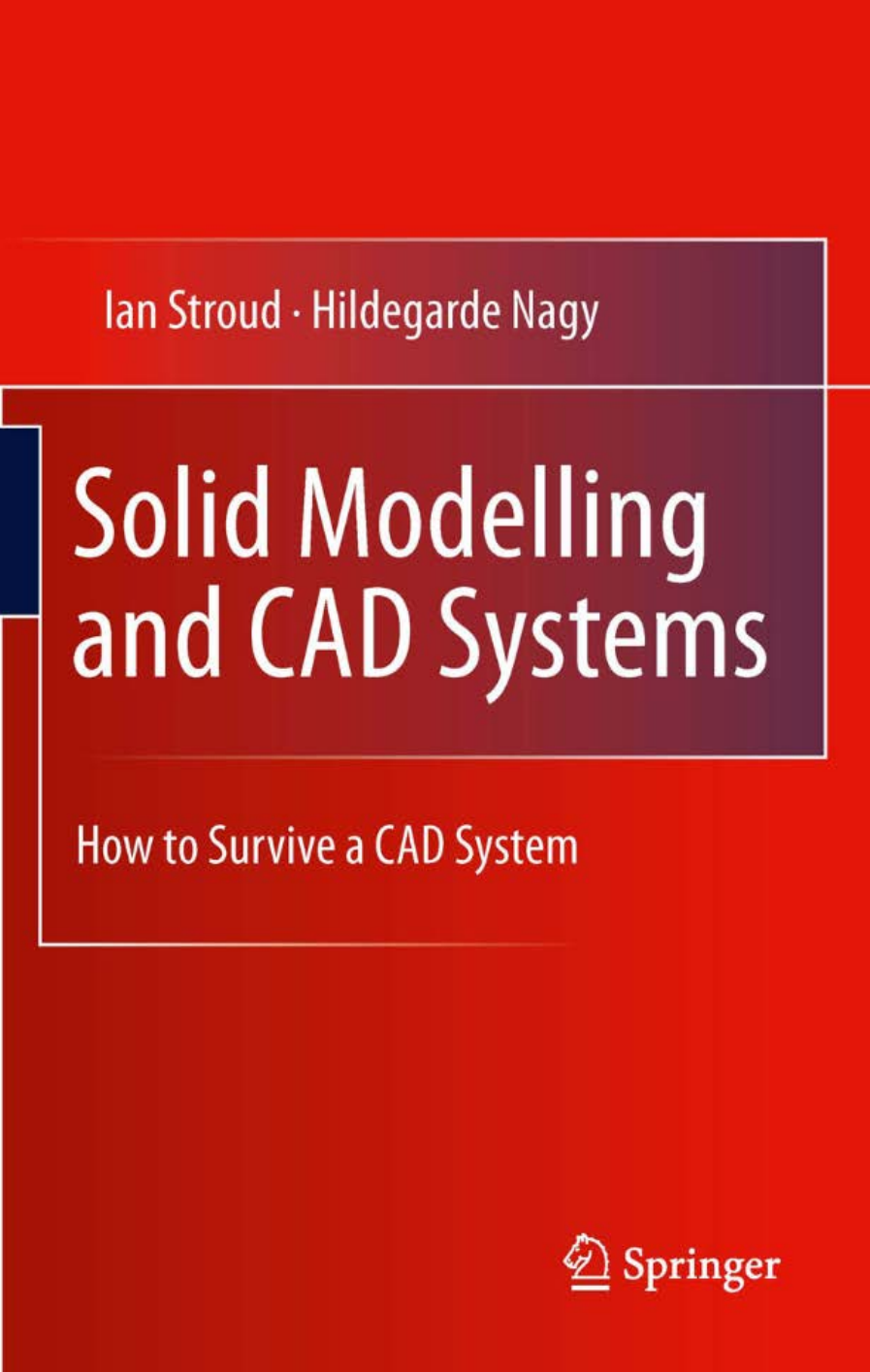
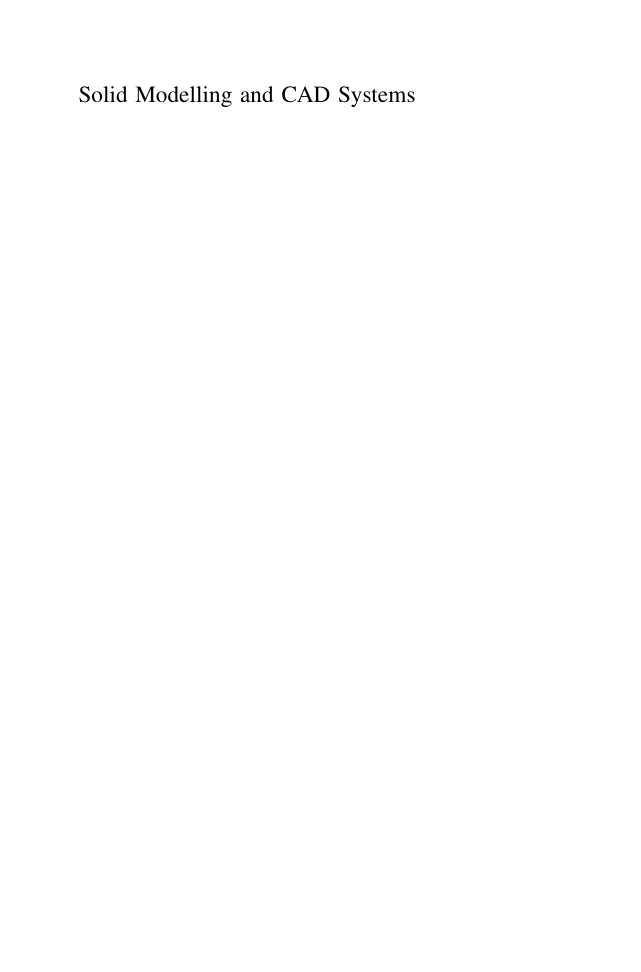

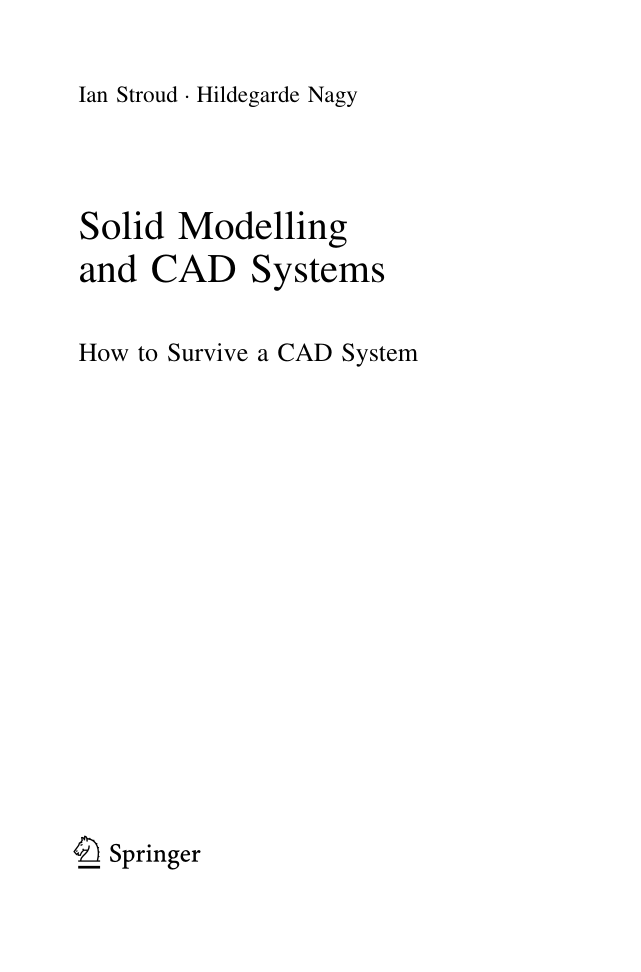

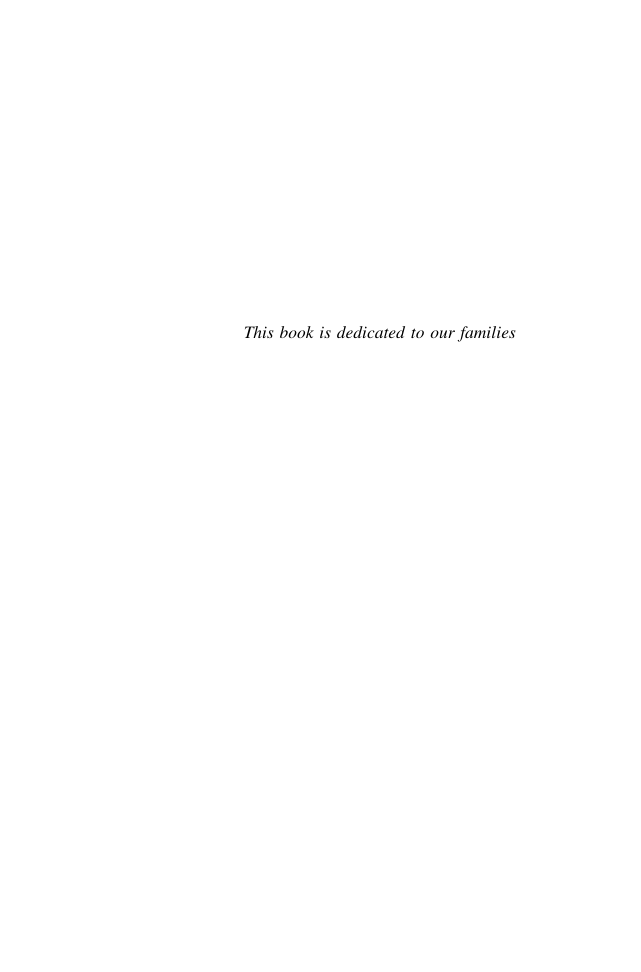

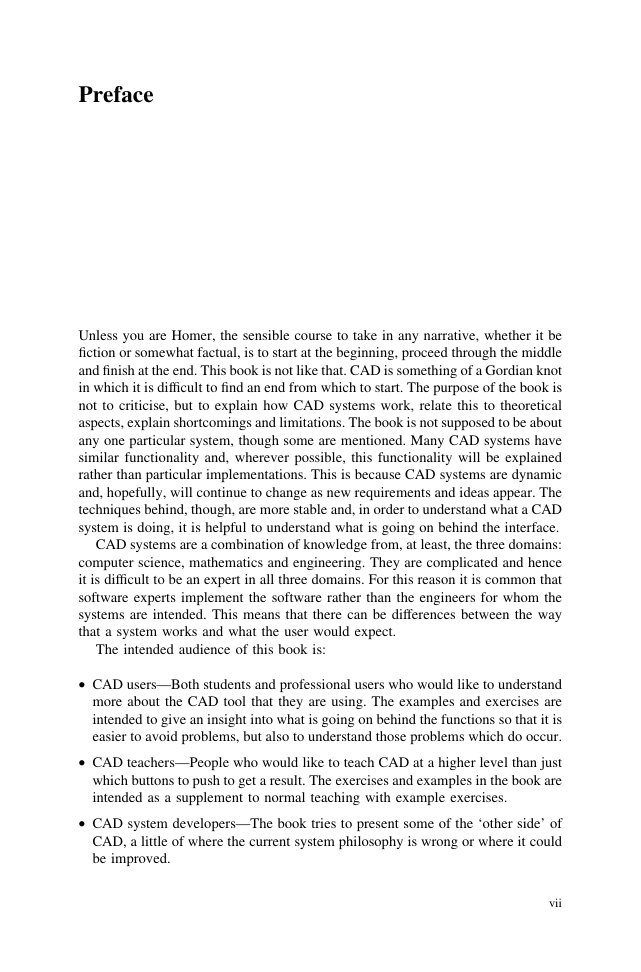








 2023年江西萍乡中考道德与法治真题及答案.doc
2023年江西萍乡中考道德与法治真题及答案.doc 2012年重庆南川中考生物真题及答案.doc
2012年重庆南川中考生物真题及答案.doc 2013年江西师范大学地理学综合及文艺理论基础考研真题.doc
2013年江西师范大学地理学综合及文艺理论基础考研真题.doc 2020年四川甘孜小升初语文真题及答案I卷.doc
2020年四川甘孜小升初语文真题及答案I卷.doc 2020年注册岩土工程师专业基础考试真题及答案.doc
2020年注册岩土工程师专业基础考试真题及答案.doc 2023-2024学年福建省厦门市九年级上学期数学月考试题及答案.doc
2023-2024学年福建省厦门市九年级上学期数学月考试题及答案.doc 2021-2022学年辽宁省沈阳市大东区九年级上学期语文期末试题及答案.doc
2021-2022学年辽宁省沈阳市大东区九年级上学期语文期末试题及答案.doc 2022-2023学年北京东城区初三第一学期物理期末试卷及答案.doc
2022-2023学年北京东城区初三第一学期物理期末试卷及答案.doc 2018上半年江西教师资格初中地理学科知识与教学能力真题及答案.doc
2018上半年江西教师资格初中地理学科知识与教学能力真题及答案.doc 2012年河北国家公务员申论考试真题及答案-省级.doc
2012年河北国家公务员申论考试真题及答案-省级.doc 2020-2021学年江苏省扬州市江都区邵樊片九年级上学期数学第一次质量检测试题及答案.doc
2020-2021学年江苏省扬州市江都区邵樊片九年级上学期数学第一次质量检测试题及答案.doc 2022下半年黑龙江教师资格证中学综合素质真题及答案.doc
2022下半年黑龙江教师资格证中学综合素质真题及答案.doc